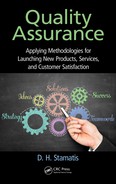
510 Appendix V
Verbs Nouns
Attract Maintain Cold Moisture
Circulate Pivot Comfort Motion
Conduct Position Component Noise
Connect Prevent Corrosion Occupant
Contain Protect Current Parts
Control Provide* Deection Path
Convert Reduce Dirt Performance
Create Regulate Drag Pressure
Decrease Resist Energy Stability
Direct Rotate Entry Surface
Enclose Seal Environment Torque
Enhance Sense Flow Travel
Extend Support Fluid Vibration
Facilitate* Transmit Force Weight
*Try to avoid use of these verbs.
Verb-Noun Listing: Process
Verbs Nouns
Allow* Join Alignment Flash
Apply Load Assembly Gauge
Assemble Maintain Burr Gas
Assure Make Casting Heat
Blend Move Cause Hole
Clean Position Cleanliness Inventory
Control Prevent Cold Length
Convert Protect Component Locator
Create Provide* Container Machine
Decrease Receive Correction Material
Deliver Release Damage Mold
Facilitate* Remove Defect Operation
Fasten Repair Device Part
Fill Rotate Die Priority
Finish Seal Dimension Schedule
Form Store Dirt Shape
Identify Supply Environment Surface
Improve Thread Equipment Tool
Increase Transport Finish Uniformity
Inspect Verify Fixture Waste
*
Try to avoid use of these verbs.

511Appendix V
Function Identification Example for a Product/Service
Team Members: Date:
Project
Listing of Functions Performed
Active Verb Measurable Noun
Improve Appearance
Position Parts
Enhance Stability
Prevent Vibration
Improve Assembly
Assure Location
Reduce Margin Variation
Enhance Cooling
Control Location
Support Part
Limit Deection
Fasten Parts
Function Identification Example for a Process
Team Members: Date:
Project:
Listing of Functions Performed
Active Verb Measurable Noun
Transfer Material (parts)
Move Material
Position Material (parts)
Apply Material (sealer)
Actuate Circuit
Weld Assembly
Remove Assembly
Position Assembly
Store Assembly
Produce Assembly
Ship Assembly
supply Material
Repair Assembly

512 Appendix V
Cascading the Y = f(X)
Level 1 Y = f (X
1
, X
2
, …X
n
)
Lev
el 2
Lev
el 3
y = f (x
1
, x
2
, …x
n
)
y
i
= f (x
i
, x
ii
, x
n
)
where:
Y is inuenced by a number of potential Xs
y is the new requirement based on X
1
s and so on; X
1
is further examined
for more potential x’s
y
i
is yet another requirement of the customer based on x
1
’s and so on; x
i
is
further examined for more potential x’s
Example: High-level application of a meal in a restaurant:
Level 1 Y = a good meal in a restaurant is dependent on X
1
= price, X
2
= ser-
vice, X
3
= satisfaction
Level 2 y = the result in satisfaction (which is the X
3
) is dependent on
x
1
= service and x
2
= food selection
Level 3 y
i
= the result in satisfaction (X
3
) with service (which is the x
2
) is
dependent on x
i
= availability of food, x
ii
= management
Level 4 and so on
Define
To know who and what the customer needs or wants, one must understand
the customer through Maslow’s theory of motivation and human needs.
Furthermore, to extend that understanding into the concept of customer
service, we must be cognizant of the PACT principle. PACT is essential in
this understanding because customer service is perishable and it depends
so much on the moment of service. PACT is an acronym for prompt, pro-
fessional, personable; accurate, attentive, acknowledging; courteous, caring,
concise; and tailored, timely, and thoughtful. Maslow’s theory is based on a
hierarchical pyramid of needs shown as

513Appendix V
5
4
3
2
1
Levels of Needs Motivation and Behavior
Level 1 = Your body:
Physical safety and security
Need to stay alive! Biological and cultural
imperatives to live. Includes having enough
healthy food, air, and water to survive.
Level 1 = Your body:
Survival skills
Eat, sleep, and take care of your bodily
needs, provide for clothing, shelter, comfort,
be free from pain.
Level 2 = Your family and work:
Social safety and security
Need to be safe from physical and
psychological harm in the present and
future, and trust in a predictable future.
Level 2 = Your family and work:
Survival skills
Work, save for future, improve skills and
talents, be responsible, and want an
organized predictable world.
Level 3 = Love and relationships:
Communication and response
Need to be loved and to love. Includes the
desire for affection and belonging.
Level 3 = Love and relationships:
Validation
Join and be active in clubs and groups, be
able to talk to others, contribute to society,
marry and have a family.
Level 4 = Self-esteem:
Self respect and acceptance
Need for reputation, prestige, and
recognition from others. Contains the desire
to feel important, strong, and signicant.
Level 4 = Self-esteem:
Brainpower
Display your talents and skills, have
self-condence, appreciate attention and
recognition from others.
Level 5 = Self-actualization:
Fulllment of goals & dreams
Need for self-fulllment. Desire to realize
your full potential and become the best you
are capable of becoming.
Level 5 = Self-actualization:
Creativity
Be a self-starter, have enthusiasm, be
creative, be dedicated, enjoy challenges,
love to accomplish results.

514 Appendix V
1. Translating the voice of the customer (VOC) to requirements (CTQs)
Level VOC Key Issues
Requirements
Good Bad
2. Understanding inputs and outputs
Process Input Variables Process Output Variables
3. Cause and effect matrix
Rating of
Importance to
Customer
1 2 3 4 5 6 7
Process Inputs
(Xs) CTPs Process Outputs (Y’s), CTC, CTD, CTQ Total
..................Content has been hidden....................
You can't read the all page of ebook, please click here login for view all page.
